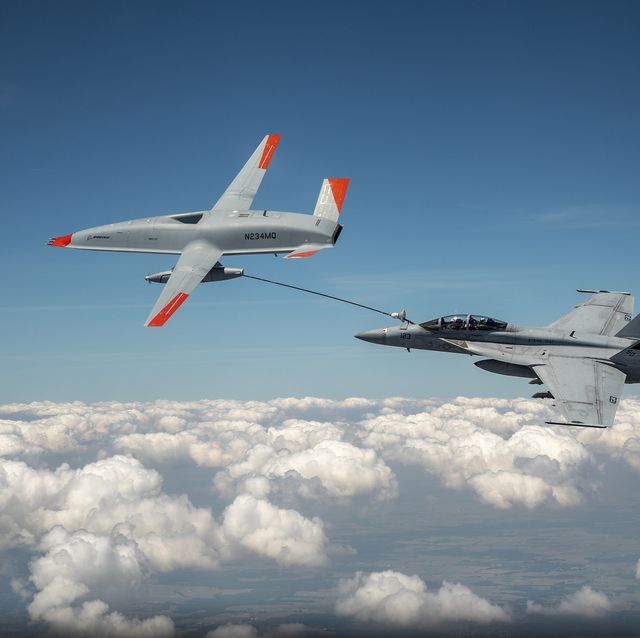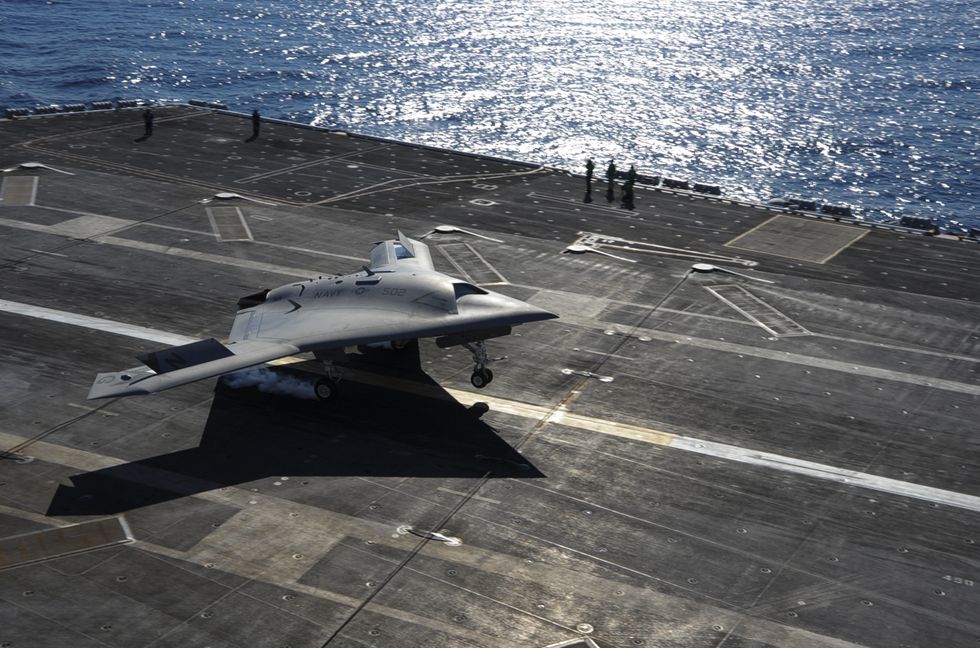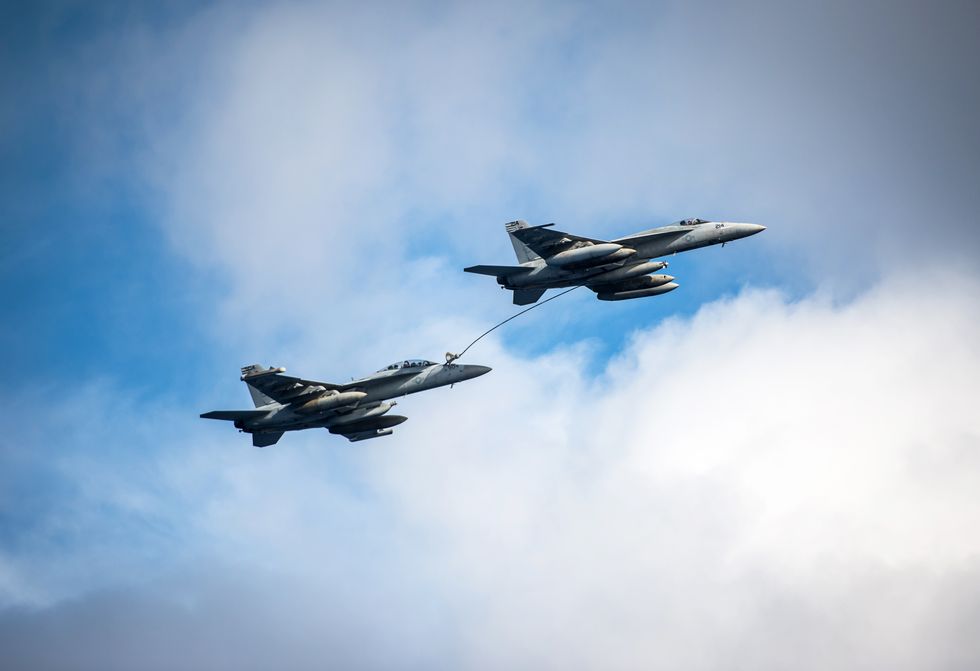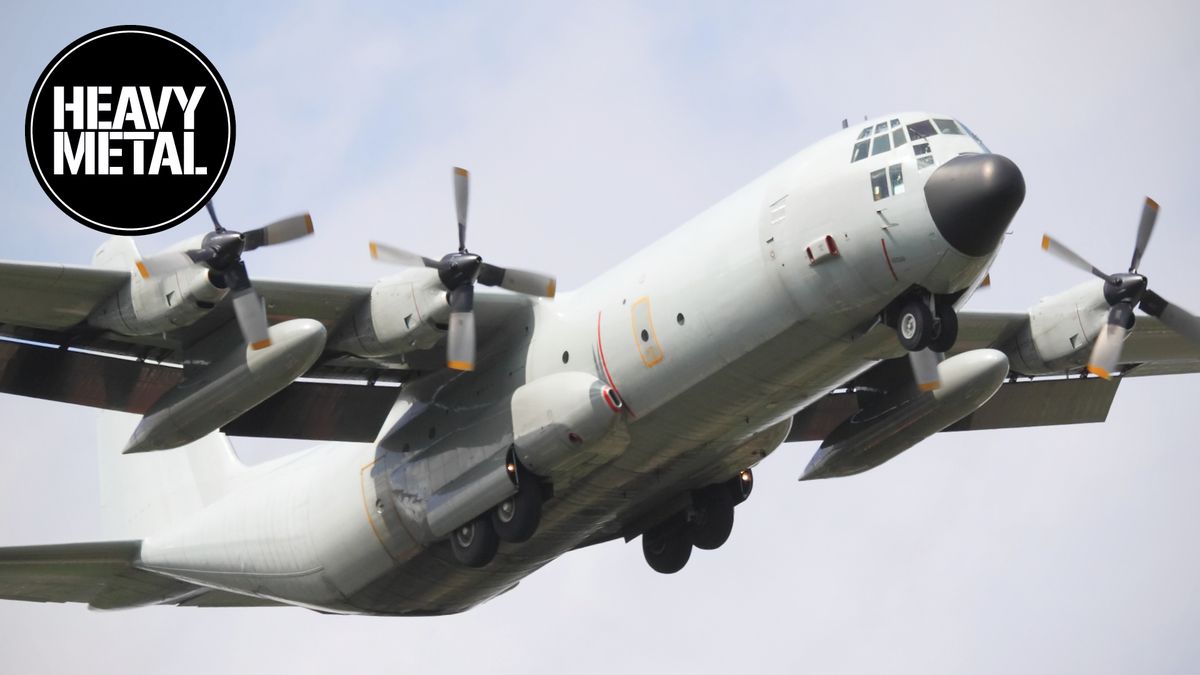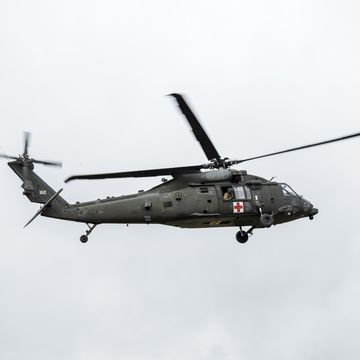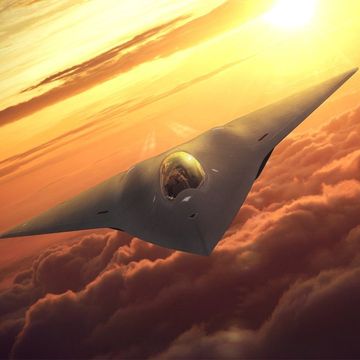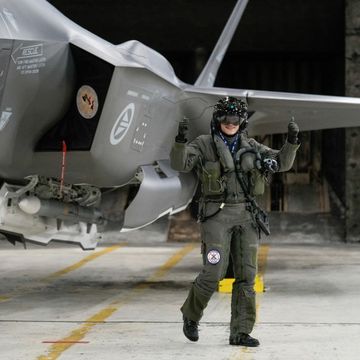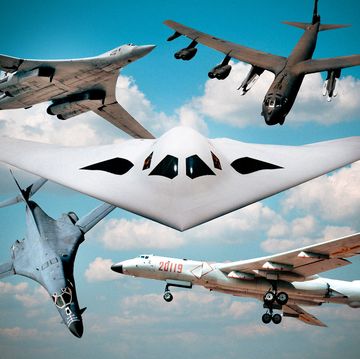- The MQ-25A Stingray tanker refueled another aircraft in the air for the first time.
- The MQ-25A passed gas to an F/A-18F Super Hornet.
- The Stingray is designed to refuel other aircraft operating from aircraft carriers.
The new Boeing MQ-25A Stingray drone just passed a key test: refueling a manned aircraft, an F/A-18F Super Hornet, in midair.
The MQ-25A is designed to act primarily as an aerial refueling tanker, allowing other aircraft based on U.S. Navy carriers to fly longer and farther—and freeing up much-needed Super Hornet fighters from the same task.
✈ You love badass planes. So do we. Let’s nerd out over them together.
On June 4, both aircraft flew from MidAmerica Airport in Mascoutah, Illinois. The MQ-25A, carrying an aerial refueling store (ARS) pod on an external pylon, unspooled an aerial refueling drogue and trailed it behind the unmanned aircraft. The Super Hornet moved up to a position behind the drone and then plugged its refueling probe into the drogue, beginning the refueling process.
There are two methods of aerial refueling. The “flying boom” method involves a large tanker—like the KC-135 Stratotanker, KC-10 Extender, or KC-46 Pegasus—lowering a long, fixed-length probe from the rear of the aircraft. The receiving aircraft typically has a receptacle port in its nose or wing. Once it’s in position behind the tanker, the receiving aircraft moves in and plugs into the boom. The U.S. Air Force and U.S. allies like Saudi Arabia and Israel, who use aircraft like the F-15 and F-16, primarily follow this method.
But U.S. Navy and U.S. Marine Corps aircraft can’t fly planes equipped with long fixed booms from aircraft carriers, so they use the “hose and drogue” system instead. The MQ-25A uses hose and drogue, as does the buddy refueling system employed by the Super Hornet. The method is also popular with many air forces that fly European aircraft.
The Navy first flew drones from aircraft carriers in 2013, when the Northrop Grumman X-47B practiced takeoffs and landings from the USS Bush. The landmark event, however, seemed to go nowhere, as the Navy dithered about how to field uncrewed planes from aircraft carriers. One obvious choice was a long-range uncrewed strike plane, which could strike targets on land far enough away that U.S. carriers were safe from anti-ship ballistic missiles like the Chinese DF-21D and DF-26.
While a strike drone would have undoubtedly been useful, it also would have resulted in just 10 aircraft—out of an air wing of about 63—with long-range capabilities. But the MQ-25A can refuel the 44 Super Hornets aboard a typical carrier, as well as the five EA-18G Growler electronic attack planes and four E-2D Advanced Hawkeye airborne early warning and control aircraft.
The Stingray’s ability to refuel Hawkeyes is particularly critical, as the E-2D is the eyes and ears of the carrier strike force, peering out and detecting threats far beyond radars on surface ships. The longer a Hawkeye can stay on patrol, the better protected the carrier is from low-altitude threats.
The MQ-25A will also be able to take over the aerial refueling mission from Super Hornets. Right now, Super Hornets fitted with “buddy system” aerial refueling pods carry out tanking on aircraft carriers. The problem? A Super Hornet outfitted for the tanking mission can’t carry missiles or bombs, reducing the number of aircraft available for actual combat missions.
The tanking mission is also adding a lot of flight hours to the Super Hornet fleet, while reducing the number of hours pilots train for actual combat. A dedicated tanker will alleviate these problems.
In addition to tanking, the MQ-25A will also have the ability to act as an intelligence, surveillance, and reconnaissance (ISR) drone. The Stringray will have a built-in electro-optical camera, allowing operators to spy on targets from a distance in both day and night conditions. The drone’s two external hardpoints could also likely carry pods equipped with intelligence-gathering capability, allowing the aircraft to scoop up enemy radio and radar signals, use synthetic aperture radar to image ground targets through fog and other clutter, or even launch smaller penetrating reconnaissance drones.
There’s also a very good chance the MQ-25A will circle back and become a strike drone after all. In March, a Navy official testified on Capitol Hill that the Stingray was designed with payload capability that has “great promise” for the strike mission. The two hardpoints could carry, for example, JDAM satellite-guided bombs or Paveway laser-guided bombs. Other payloads might include anti-ship missiles, electronic attack pods, and Quickstrike naval mines.
🎥 Now Watch This:

Kyle Mizokami is a writer on defense and security issues and has been at Popular Mechanics since 2015. If it involves explosions or projectiles, he's generally in favor of it. Kyle’s articles have appeared at The Daily Beast, U.S. Naval Institute News, The Diplomat, Foreign Policy, Combat Aircraft Monthly, VICE News, and others. He lives in San Francisco.
